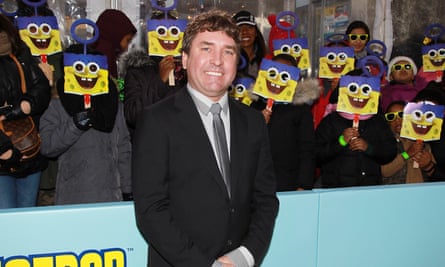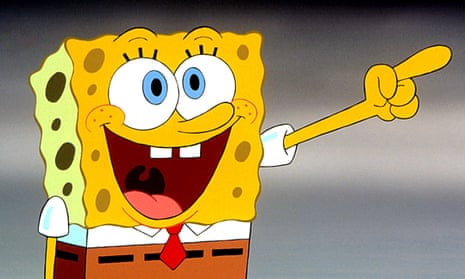The perfect kids’ entertainment is something the entire family can watch together. However, that is a near-impossible mix. If you aim too hard at the kids, filling your show with dumb colours and empty repetition, parents will disappear into their phones within seconds. Aim too hard at the adults, by loading up on ephemeral pop-culture references, and you have the later Shrek films. Nobody’s happy.
SpongeBob SquarePants was, and still is, perfect entertainment. Sure, if – as a sensible adult with more pressing concerns – you only kept half an eye on these things, then there was nothing to separate SpongeBob from the rest of the dreck. It was a loud, hyperactive cartoon with a theme tune that sounded like a wasp attack and the word “Pants” in its title. Nothing about it warranted further investigation. But once you were in – either as a child, or as a parent watching as a child, or (in my instance) as a hungover student watching on SM:TV Live – you were in for good.
The genius of SpongeBob creator Stephen Hillenburg, who died on Tuesday, was taking the dark, high-voltage weirdness and gruesome closeups of John Kricfalusi’s Ren & Stimpy – a series that tugged and tore at the boundaries of what could and should qualify as children’s entertainment – and making it palatable enough for the young to enjoy.

Because, make no mistake, SpongeBob was iconic. Essentially just a yellow cube with limbs, SpongeBob was easy to identify, which gave him enormous power. For example, 15 years ago – almost to the week – I sacked off my horrible job and went to teach English to toddlers in South Korea. As soon as I arrived, I was hugely out of my depth. They didn’t speak English and I didn’t speak Korean, so I spent the first couple of weeks scratching around for any commonalities. In the end, I found two. One, weirdly, was The Matrix. The other was SpongeBob. They knew him, they could draw him, they could impersonate him. When all else failed, there was always SpongeBob. He was was my in.
But what gave SpongeBob SquarePants such longevity was its askew humour. Nestled in among the zippy, kid-friendly whizz-bonk visuals was a very offbeat, very sophisticated comedy. Under the piece published here about Hillenburg’s death yesterday, commenter DenisCooper reminded me of one of the show’s greatest ever jokes. SpongeBob receives a letter in the mail. He opens it and the ink immediately runs, because SpongeBob lives under the sea. “Obviously from someone with no idea of the physical limitations of life at the bottom of the ocean,” sniffs SpongeBob, who then throws the letter on to a bonfire.
SpongeBob SquarePants was full of these jokes, visual enough to appeal to children but brainy enough to appeal to adults. Another example: when Hillenburg made The SpongeBob SquarePants Movie in 2004, he packed it with songs by Motörhead, Ween and the Flaming Lips, who submitted a song entitled SpongeBob & Patrick Confront the Psychic Wall of Energy. The song took a throwaway gag – SpongeBob wearing a fake seaweed moustache – and expanded it into a deep meditation about the nature of masculinity. It was stupid and sincere in equal measure. It fit SpongeBob perfectly.
For all its overt wackiness, SpongeBob’s legacy might be in animation designed for older children. Its casting formula, a beguiling mix of alt-comedy stars (Tom Kenny, Michael McKean) and respected actors (Clancy Brown, Ernest Borgnine), has been replicated everywhere from Adventure Time to Little Big Awesome. Its absurdist sight-gags (see the episode where SpongeBob bites his nails, then eats his hands, then eats more hands, then begins to feast from a KFC bargain bucket full of hands speak to the broken logic of Rick and Morty. Eventually, the series will go down in history as a gateway show: a series just weird enough to make kids go and explore even more bizarre animation.
But for now, it is just perfect kids’ entertainment. It is a show we can all watch: me, my wife, my three-year-old and my one-year-old. We all take different things from it. And we will continue to take new things from it as we all age and change. Very few shows can do that. SpongeBob SquarePants is a masterpiece.

Comments (…)
Sign in or create your Guardian account to join the discussion